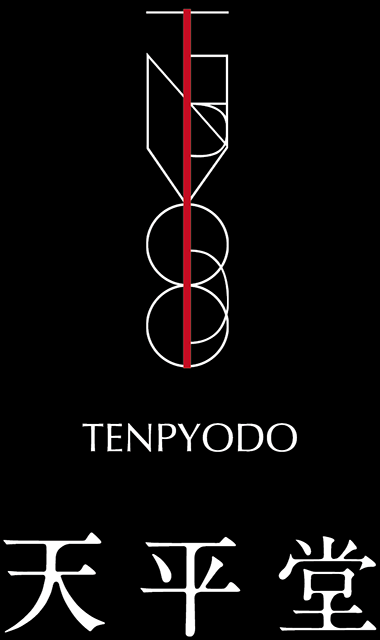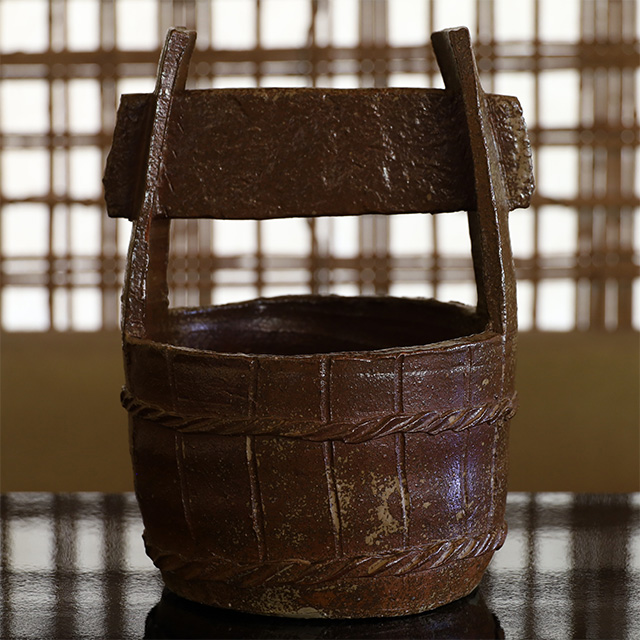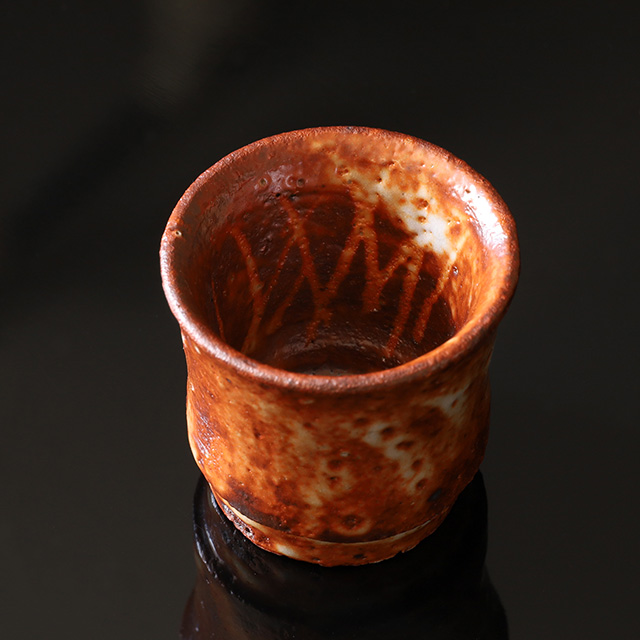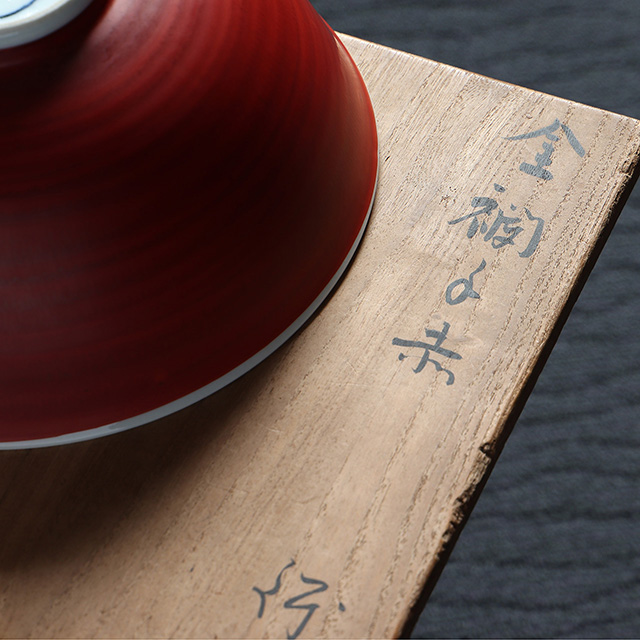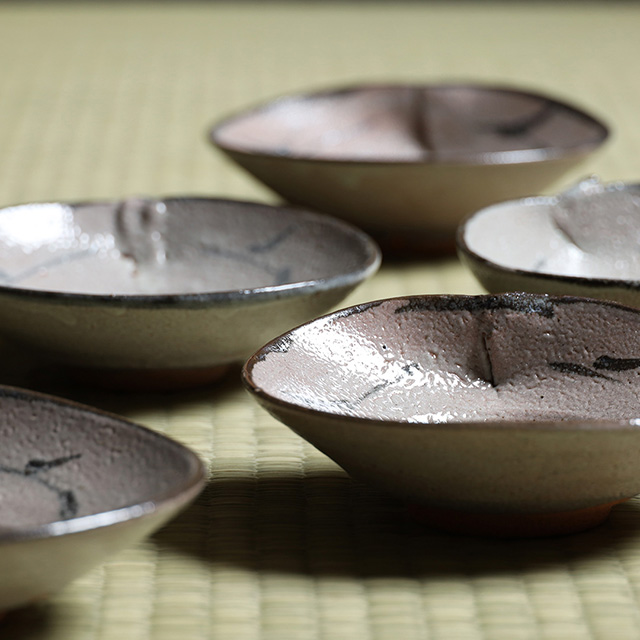Rosanjin Kitaoji
北大路魯山人
Rosanjin Kitaoji 1883-1959
Childhood
Rosanjin Kitaoji was born in kyoto as the second son of Kiyoaya Kitaoji. Real name is Fusajiro, alias Kaisa, Rokei, Rosanjin and Mukyo. At the same time as birth, grew up in an adversity that changed his family.
In 1889, adopted by wood engraver Takezo Fukuda.
In 1893, after graduating from Umeya Jinjyo Primary School, went to apprentice apprenticeship at the chinese medicine store “Chisaka-Wayakuya” in nijo karasuma.
In 1895, impressed with Seiho Takeuchi’s japanese painting at the 4th National Industrial Exhibition, wanted to be a japanese painter.
In 1896, quit his apprenticeship and asked his adoptive father to go to the Kyoto Prefectural School of Painting, but it was not granted, and helped the family business with woodblock printing.
In 1897, wanted to be a calligrapher.
Calligraphy Talent Blooms
In 1899, the western signboards make a lot of income and are called “Teacher” in the neighborhood.
In 1904, Received the first and second prize at the Japanese Art Exhibition. The award winning work was bought by minister of the imperial household Mitsuaki Tanaka.
In 1905, studied under calligrapher Katei Okamoto. Written by Teikoku Life Insurance Company as “Kaitsu Fukuda”.
In 1907, independent of Katei, the sign of professor calligraphy was raised as “Outei Fukuda”.
In 1908, married Tami Yasumi. Get acquainted with Rihachi Fujii and know his daughter Seki.
In 1910, went to korea with mother Tome.
In 1911, Became the secretary of the Korean Printing Bureau.
In 1912, met with Wu Changshuo in Shanghai.
In 1913, named “Taikan”, which means “Overlooking the World”. While holding the calligraphy classroom, gained the reputation through writing and seal engraving. Met Seiho Takeuchi and was asked to produce the seal.
In 1914, divorced with Tami.
In 1915, “Kitaoji” has been restored to the last name. Become the house guest of Entai Hosono in Kanazawa, try to underglaze blue and overglaze polychrome enamel under Seika Suda through Entai.
In 1916, married Seki Fujii. Named “Taikan Kitaoji” and “Rokei Kitaoji”.
“Taigado Art Store” and “Bishoku Club”
In 1917, met Takeshiro Nakamura.
In 1919, established “Taigado Art Store” with Takeshiro Nakamura in tokyo kyobashi. Moved to the rental house in north kamakura. From around this time, started using the alias “Rosanjin”.
In 1920, renamed as “Taigado Art Store”. The dish will be served the old ceramics at the taigado art Store.
In 1921, membership system “Bishoku Club” was established on the second floor of taigado art store. Moved to north kamakura.
In 1922, began producing tableware for bishoku club at the Seika Suda kiln and Tozan Miyanaga kiln. Officially inherited the family and named “Rosanjin”.
In 1923, taigado art store and bishoku club were destroyed by the great kanto earthquake. The bishoku club will be reopened at the “Hana-no-Chaya” in shiba park.
Opened the Membership Based Luxury Restaurant “Hoshigaoka-Saryo”
In 1924, produced more than 5,000 pieces of celadon and tableware for 100 people at the Tozan Miyanaga kiln, and met Toyozo Arakawa, who was the factory manager at the same kiln. The renovation work has begun by borrowing the “Hoshigaoka-Saryo” located in the precincts of the hie shrine in tokyo. Came up with the sale of chinese stationery to raise funds for opening the hoshigaoka-saryo, visit Wu Changshuo in shanghai. Made a big profit by selling after returning home.
In 1925, Opened a membership based luxury restaurant “Hoshigaoka-Saryo”. Takeshiro Nakamura is the president and Rosanjin is the advisor and chef, gained a reputation for entertainment and tableware. Will increase members as the social place. Met Fujio Koyama at the Zoroku Mashimizu-kiln.
Opened ” Seiko-Kiln”
In 1927, in search of the ideal tableware for hoshigaoka-saryo, opened “Seiko-Kiln” in yamazaki, kamakura city, kanagawa prefecture. Invited Toyozo Arakawa of Tozan Miyanaga-kiln as the kiln manager, built the “Reference Museum of the Ancient Ceramics” displaying rosanjin’s collection, the tea room “Mukyoan”, and put up the signboard of “Rosanjin-Kiln Art Institute Seiko-Kiln”.
Divorced Seki and married Kiyo Nakajima. With the motto of “Zahen-Shiyu”, including oribe and shino and kizeto, developed ceramics in search of ideals up to kyoto ware such as Kenzan and Ninsei and Dohachi.
In 1928, Kuninomiya highness came to the kiln.
In 1929, calpis president Kaiun Mishima opened the “Gin-Saryo” in ginza as the branch of hoshigaoka-saryo.
In 1930, when Toyozo Arakawa discovers shino ceramic piece in mutabora of ogaya, “Hoshigaoka” was published with the main theme of discovery of the mino-ancient-kiln.
In 1933, gin-saryo is directly managed by hoshigaoka-saryo.
In 1935, Opened “Osaka Hoshigaoka-Saryo” and gained popularity among food lovers in kansai. Expanded the scale of business by, for example, taking over direct management of gin-saryo, which had been opened by the calpis president, but around this time his relationship with Takeshiro Nakamura began to deteriorate over management policies. Succeeded in reproducing momoyama ware such as shino and oribe and kizedo in the first kiln using the seto style large climbing kiln. The total number of members of the hoshigaoka-saryo is over 2,000, It is said that if you are not the member of hoshigaoka, you are not the japanese celebrity.
In 1936, received a notice of dismissal from Takeshiro Nakamura for the reason of free management. Changed the signboard to “Rosanjin Ceramic Institute”, based on the seiko-kiln, determined to proceed with the single pottery. From this time, the use of the name “Rokei” gradually decreases.
The Pottery Life Based at the Seiko-Kiln
Looking at the situation of Rosanjin who lost confidence due to dismissal, the request to produce ceramics for gifts came from Kinya Nagao of “Wakamoto” and the top of the company that supported it, will gradually regain confidence.
In 1938, Kiyo ran away with the former seiko-kiln craftsman and divorced. Opened “Sankai Club” at the nihonbashi shirokiya head office food department. From this time, begins to lean on Ryokan. Married Mume Kumada.
In 1939, divorced from Mume. Produced a large amount of ceramics and lacquerware for use as tableware for the Ryokan. “Fukudaya” in tokyo and “Hasshoukan” in nagoya are famous as restaurants related to Rosanjin.
In 1940, married Umeka. Focused on painting.
In 1942, divorced Umeka and never remarried.
Wartime
In 1943, as the war situation intensified and material restrictions were imposed, making it impossible to use fire, devoted himself to lacquer art.
In 1945, osaka hoshigaoka-Saryo, tokyo hoshigaoka-saryo and gin-saryo were burned down in air raids. The asset problem with Takeshiro Nakamura has been settled.
In 1947, Toyoko Shirono opened the “Kado-Kado-Bibou” exclusive store for Rosanjin in ginza. Rosanjin’s works caught the attention of officers of the occupying forces, which led to a major change in his attitude, which had previously only dealt with japanese people, and he began to globalize. Yutaka Mafune established the “Seishin Club” the art lovers group that surrounds the Rosanjin.
In 1948, established “Rosanjin Craft Shop”. The seiko-kiln, which had been closed during the war, reopened.
Later Years
In 1949, often visit Toyo Kaneshige-kiln in imbe.
In 1951, Picasso praised “Red Shino Dish“ of Rosanjin for Contemporary Japanese Painting Ceramic Art Exhibition in valoris, southern france.
In 1952, visited Isamu Noguchi and Toyo Kaneshige-kiln to create bizen works.
In 1953, Toyo Kaneshige and Kei Fujiwara visited and built the bizen ware kiln in house.
In 1954, at the recommendation of Isamu Noguchi and an invitation from Rockefeller, who was the president of the japan-america society, toured the united states with approximately 200 works and held lectures and exhibitions. The works has been well received at museums such as the Museum of Modern Art(MoMA)in new york and the freer gallery of art in washington.
In 1955, get to know Kiichiro Zenta of zenta shoundo through the introduction of Yusai Maeda. Recommended to become the holder of the important intangible cultural property “Oribe Ware”(Living National Treasure), but declined.
In 1959, died of cirrhosis of the liver.
In his later years, Rosanjin had a bad reputation for his personality, so it seemed that his posthumous works would be forgotten, but when the rosanjin boom that occurred in the united states led to his works being re-imported, the prices of his works rose in an instant. He left behind the excellent track record as the painter, seal engraver, calligrapher, cook, potter, and lacquer artist, and with his insight into ancient ceramics, he continued to seek out gourmet food and authentic tableware. As reflected in the saying, “Utensils are the Kimono of Cooking”, Rosanjin took on the challenge of innovation in pursuit of the appeal of japanese cuisine, and the various experiments he put into practice have now been passed down as part of japanese cuisine culture. His insight in emphasizing the inherent practicality of pottery has contributed greatly to the recent interest in food and tableware. It exhibits the free spirited style with grace and depth, and its originality is best demonstrated in raku ware camellia bowl and oribe and bizen cutting board dish. He is also known as the model for Yuzan Kaibara, the character in the manga “Oishinbo”.
We sell and purchase Rosanjin Kitaoji
We have a physical shop in Hakata-ku, Fukuoka City, where we sell and purchase works by Rosanjin Kitaoji. Drawing on a long career and rich experience in dealing, we promise to provide the finest service in the best interests of our customers. With the main goal of pleasing our customers, we will serve you with the utmost sincerity and responsibility until we close the deal.
